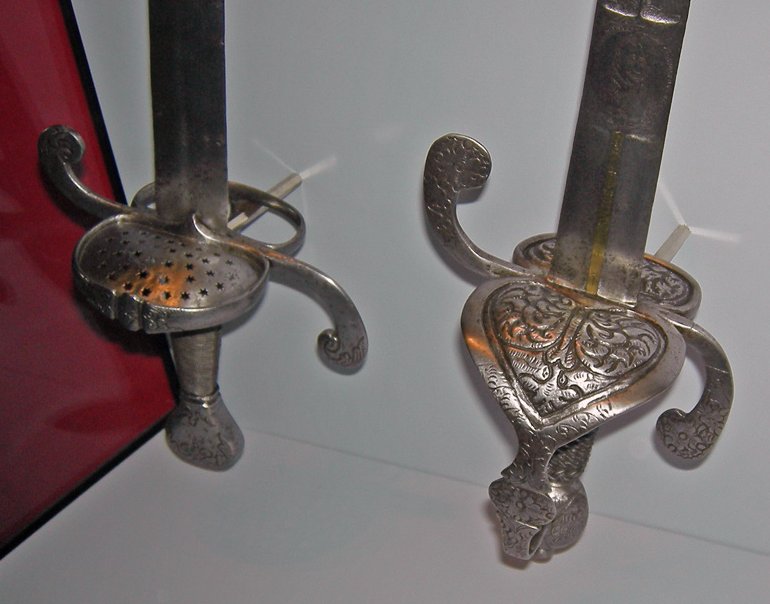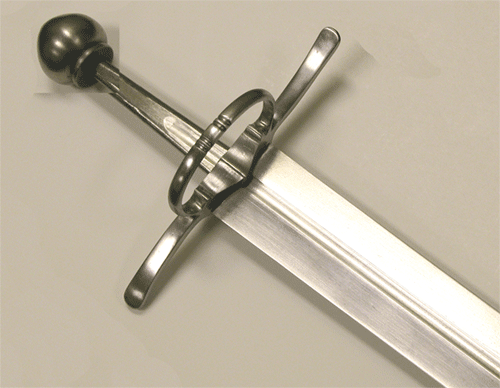Posts: 5,981 Location: Birmingham, Alabama
Tue 27 Feb, 2007 10:09 am
I can't stand the suspense!
Those of you who spotted the Windlass Steelcrafts Scottish Backsword hilt are correct.
Those of you who spotted the Angus Trim blade also are correct.
It's a Photoshop Frankensword. I actually have these components sitting on my workbench at the moment. I put them together digitally just to see how they'd look as a complete weapon before I launch into the actual handwork.
In this image, I've shortened the grip by about 1" to account for drilling through the pommel and peening the tang over a button.
My first thought when I held the hilt up to the bare AT was, "Italian military sword, ca. 1500." I'd probably broaden that to 1500-1600, but there's just something about the way all the components and proportions come together here that makes me think the earlier date works better. The broad, tapering, fullered blade seems vaguely cinqueda-ish, and the hilt details also remind me of some Italian hilts of the late 15th c.
I, too, would prefer a slightly larger pommel just for aesthetic reasons. I don't think that would necessarily improve handling in this case. It's a heavy pommel and a light, tapered blade. Plus, there's a good bit of steel in the cross, given the two side rings. It should feel pretty good. If I go through with the project, I'll also be adding a steel pommel button.
The grip is my main uncertainty. I'm trying to decide between the following options:
-simple, double-tapered grip with cord, leather wrap and single riser (similar to that shown above, but in oxblood)
-double-tapered, faceted grip with leather wrap and single riser (the shape of the antique's grip, below, but covered in cord and oxblood leather)
As of right now, I'm leaning toward the faceted grip, but I'd like to hear your opinions and suggestions.
Do you think this looks historically plausible enough for me to proceed?
 Attachment: 46.27 KB
Attachment: 46.27 KB








